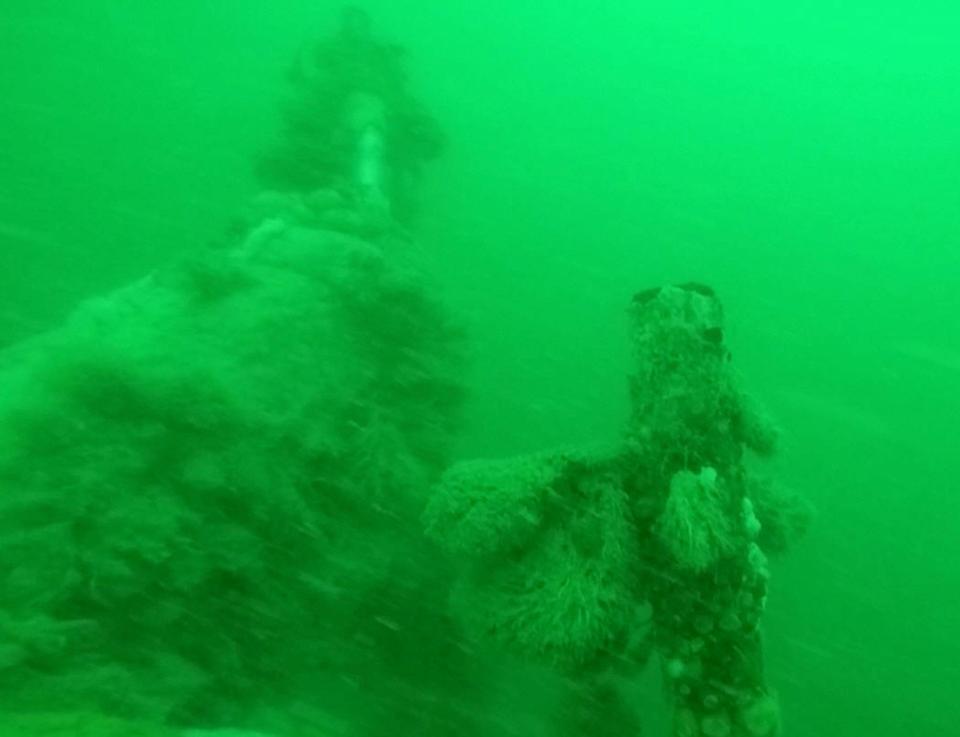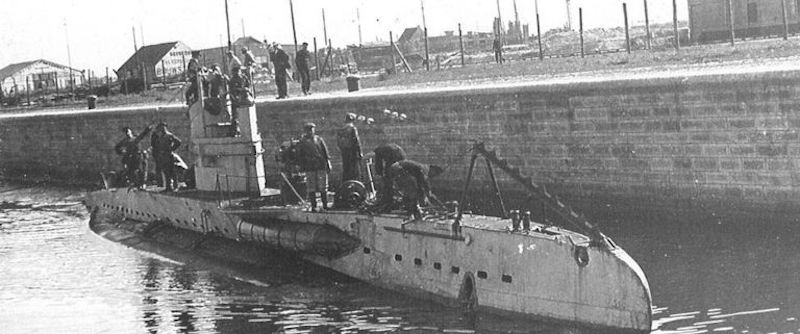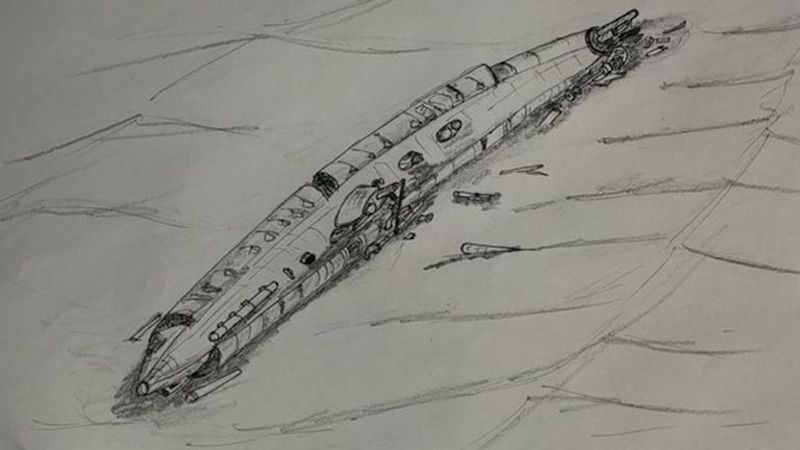WWI German U-Boat Found Nearly Intact Off Belgium Coast
Marine archaeologists have uncovered the wreck of a World War I German U-Boat off the coast of Belgium, thanks to a sharp-eyed reanalysis of sonar scans from an undersea survey that was carried out several years ago.
The discovery of the wreck was announced at a news conference on Tuesday (Sept. 19) by the governor of Belgium's West Flanders province, Carl Decaluwe. "It's quite amazing that we found something like this," he told reporters, according to the Chicago Tribune.
Archaeologists have identified the wreck as a Type UB-II submarine built by Germany during World War I, when up to 18 such vessels were based in occupied Belgian ports to carry out raids against British ships. [Sunken Treasures: The Curious Science of 7 Famous Shipwrecks]
Damage to the hull of the submarine suggests it sank after hitting a marine mine, say the discoverers. It's thought that the remains of the 23 crewmembers are still inside the vessel.
Marine archaeologist Tomas Termote, who made the first dives to the wreck in June, said the sub was first "discovered" by a government survey of Belgian waters in 2014, but was thought to be the wreck of a World War II landing craft, which are common in the area.
"[It] was already in the government database," Termote told Live Science, "but by analyzing the multibeam sonar scans, we realized it wasn't just a normal wreck."
Termote added that it became obvious from the scans that the wreck was a U-boat — "pointed at both ends, with a tower in the middle," he said.
Sign up for the Live Science daily newsletter now
Get the world’s most fascinating discoveries delivered straight to your inbox.

Secret location
Termote and his dive team found the 88-foot-long (27 meters) submarine lying on its starboard (right-hand) side at a 45-degree angle, at a depth of about 90 feet (27 m).
The exact location of the wreck is being kept secret until it can be granted formal protection from looters under Belgian law, Termote said.
The wreck is now entirely covered with anemones, barnacles and weeds: "For a trained eye, it is easily recognizable as a U-boat, but to a layman it's just a big heap of iron," Termote said.
The discovery was a surprise because there was no record of a German sub sinking at that location, he added.
"We did not expect another U-boat to be found in that specific area," Termote said. "I don't think anybody expected this, because one thinks almost all the [U-boat] wrecks are accounted for nowadays."
To date, 10 German U-boats have been found in Belgian waters, making this the 11th such discovery, he said. [Photos: British Warships from WWI and WWII Discovered Near Norway]

Although the sub's hull is mostly intact, heavy damage near the bow suggests it sunk after hitting a marine mine. One of the torpedo tubes, at the front of the vessel, had been blown away by the blast, Termote said.
"All the pieces are lying in the sand next to the wreck, so it must have been instantaneous," he said. "The explosion happened and it sank immediately."
Both of the remaining crew hatches were firmly closed, while the third hatch had been torn away, likely as the result of fishing activity since the vessel sank, Termote said.
Curiously, both of the periscopes on the wreck are bent at a forward angle, and Termote thinks this damage may have been caused when the U-boat was rammed near the surface by a British warship.
"One possibility is that [it] got rammed, and the British reported [it] was sunk," he said. "But [it] probably escaped underwater, and got hit by a mine just before reaching friendly waters."

War grave
Termote and his colleagues have made two dives to the wreck and hope to make another dive to try to learn the vessel's official identification number.
"It's still a bit of a mystery," he said. "There are three possible identification numbers which it could be, so I hope to find out in the next diving session."
Termote said identifying the wreck may be challenging because the only way to find out the number is from markings on the propeller.
He added that the governor of West Flanders province, who authorized the dives to the wreck, had notified the German ambassador of the discovery.
"The Germans will want to know which U-boat number it is, and we will try to get that solved so they can inform the families [of the crew]," Termote said. "I hope we can do a ceremony next year on the wreck site with the German Navy, to pay our respects."
Termote said it's unlikely that Germany would want to salvage the U-boat or recover any of the remains. "It's almost full of sand and silt, and you'd have an enormous job to suck out the sand. And at a depth of 90 feet it would take many dives and many divers to do that," he said.
"So, salvaging the wreck would be a very costly affair, and I think the best solution is to try to identify her and then leave the crew to rest there," Termote said.
Original article on Live Science.
Tom Metcalfe is a freelance journalist and regular Live Science contributor who is based in London in the United Kingdom. Tom writes mainly about science, space, archaeology, the Earth and the oceans. He has also written for the BBC, NBC News, National Geographic, Scientific American, Air & Space, and many others.









